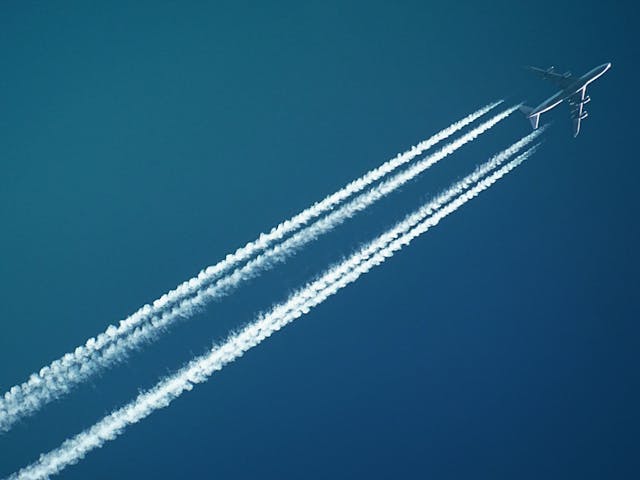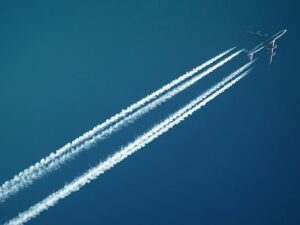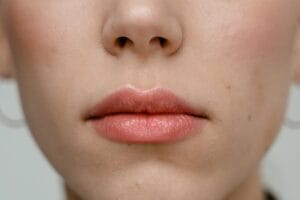Flying After Rhinoplasty: Everything You Should Know
So you just had rhinoplasty. Maybe you flew to see a surgeon in another city (ironic, right?), or maybe you’ve got a trip planned that couldn’t wait. Either way, there’s this question nagging at you: When can I actually fly again, is flying after rhinoplasty safe?
Here’s the thing—the answer isn’t as simple as you’d hope. Flying after rhinoplasty is… well, it’s complicated. There are real medical reasons to wait, and they’ve got everything to do with cabin pressure, swelling, and what’s happening inside your nose while it heals. Most surgeons will tell you to wait at least one to two weeks. But honestly? That’s just scratching the surface.
What bugs me about most articles on this topic is they don’t really explain why that timeline exists. It’s not like surgeons just picked a number out of a hat. The pressure changes you experience during flight can mess with healing tissue in ways that range from annoying to seriously problematic. Once you understand what’s actually happening, the recommendations start making a lot more sense.
This guide walks you through everything—from the science behind those restrictions to what you can do to make travel work if you absolutely have to fly sooner than you’d like.
Quick Answer: Most surgeons recommend waiting at least one to two weeks after rhinoplasty before flying. The cabin pressure changes during flight can affect healing nasal tissues, potentially causing increased swelling or complications. Complex or revision rhinoplasties may require waiting three to four weeks. Always consult your surgeon before making travel plans post-surgery.
Understanding the Risks of Flying Too Soon
Okay, so why can’t you just hop on a plane the day after surgery? Fair question.
Here’s what a lot of people don’t realize: airplane cabins are pressurized, sure, but not to sea level. Not even close. You’re basically sitting at what feels like 6,000 to 8,000 feet up. That means less atmospheric pressure, which does weird things to air inside your body—including your sinuses and, you guessed it, those healing tissues in your nose.
When surgeons do rhinoplasty, they’re working on bone, cartilage, soft tissue. Blood vessels get disrupted. Little pockets of air or fluid can build up at the surgical sites. Now imagine those pockets trying to deal with pressure changes mid-flight. They expand. They contract. It can cause discomfort, extra swelling, or in rare cases, actual damage to the work that just got done.
Then there’s oxygen. Your body needs steady oxygen levels to heal right. At cabin altitude, you’re getting maybe 90-95% oxygen saturation instead of the usual 98%. For a nose that’s actively trying to repair itself? Yeah, that difference matters.
And honestly? The dry air on planes is brutal. I’ve talked to surgeons who say it’s one of their biggest concerns. That parched cabin environment dries out the delicate healing tissues, which can lead to more crusting, bleeding, or just slow down healing of those internal incisions.
Oh, and don’t forget the practical nightmare of airports. Luggage. Overhead bins. Someone’s backpack swinging around in a cramped space. Your post-surgical nose is, let’s be real, fragile. A stray elbow or a heavy bag bumping your face isn’t just uncomfortable—it could mess up hours of careful surgical work.
The Recommended Timeline: What Surgeons Actually Say for Flying after Nose Surgery
Most plastic surgeons and ENT specialists will tell you the same basic thing: wait at least one to two weeks before flying. Two weeks is usually the safer bet. But here’s where it gets interesting.
For straightforward rhinoplasties that go smoothly, one week might be okay—if your surgeon gives you the green light. We’re talking about cases where you’ve already had your follow-up, the splint is off, and there’s no infection or crazy swelling hanging around.
Complex stuff is different. Revisions, procedures with a lot of bone work, reconstructive surgery—those usually need more time. Two weeks minimum, but honestly, many surgeons prefer three to four weeks. The logic makes sense: more work done means more healing that needs to happen before your body can handle pressure changes safely.
Revision rhinoplasties? That’s a whole other story. If you’ve had previous nose surgery, your nasal tissues are dealing with altered blood supply and scar tissue. That affects how everything heals. Surgeons tend to be way more conservative with revision patients—often saying wait three weeks or more before flying.
But here’s the thing: surgeons don’t all agree on the exact timeline. Some are totally fine with patients flying after five to seven days (assuming everything looks good). Others won’t even consider it until the three-week mark. The variation comes down to different techniques, individual patient factors, and honestly, different comfort levels with risk.
Bottom line? You’re not making this call alone. Your surgeon knows your specific procedure, your medical history, how your recovery is actually going. Their recommendation beats whatever you read online. Always.
Flying After Rhinoplasty: Factors That Influence When You Can Fly
Look, not every rhinoplasty is the same. Not every recovery is the same. There are a bunch of factors that determine when flying becomes safe for you, specifically.
Type of Surgery
Open versus closed rhinoplasty can make a difference. Open procedures usually mean more extensive work, so they might need a bit longer before you’re good to fly. Closed rhinoplasties are less invasive, so the wait time might be slightly shorter—but we’re talking maybe just a few days difference here.
Your Overall Health
If you’re healthy, you heal well, and you don’t smoke? Your body might handle flying sooner. But smokers? That’s a whole different situation. Recovery takes way longer, and honestly, many surgeons won’t even operate on active smokers because healing becomes such a problem. Diabetes, autoimmune disorders, circulatory issues—all of that factors in too.
Flying After Rhinoplasty: Complications or Signs of Trouble
Any sign of infection? Excessive bleeding? Swelling that seems off? Don’t fly. Just don’t. These are red flags that something isn’t healing right, and throwing air travel into the mix could make it worse. If you’re worried about your recovery, deal with that before making travel plans.
Flying After Rhinoplasty: Flight Duration
A one-hour domestic flight and a 12-hour international journey are worlds apart. Longer flights = more time at altitude, more dry air, more chances for stuff to go sideways. If you’ve got to travel early in recovery, shorter flights are obviously better.
Destination Considerations
Flying somewhere high up? That matters. Denver, mountain destinations—they add another layer of pressure stuff to think about. High elevation destinations mean you’ll want extra clearance from your surgeon.
Flying After Rhinoplasty: What Happens If You Must Fly Earlier
Sometimes travel just can’t wait. Family emergencies. Work stuff that won’t budge. Life doesn’t always line up with ideal recovery timelines. I get it.
If you’re in that situation where you need to fly sooner than recommended, here’s what to do.
First thing: talk to your surgeon. Immediately. Don’t book a flight and then ask permission—that’s doing it backwards. Discuss it beforehand. Your surgeon might have strategies to make earlier travel safer, or they might help you understand if your specific case makes it too risky.
Hydrate like it’s your job. Start the day before your flight and keep going during it. The dry cabin air is already rough; being dehydrated makes everything worse. Water, water, water. Skip the alcohol and caffeine—they’ll just dehydrate you more.
Prepare Carefully for Flying after Nose Surgery
Use saline nasal spray. A lot. That dry cabin air? It’ll dry out your nasal passages, which isn’t great for healing tissues. Saline spray helps keep things moist and can cut down on discomfort. Bring a travel-sized bottle and use it every hour or so.
Consider wearing a face mask. I know, we’re all sick of masks, but beyond the obvious reasons, a mask actually helps humidify the air you’re breathing a little. Won’t fix the pressure problem, but it can help with the drying effects.
Be super careful about not bumping your nose. Maybe choose an aisle seat for more control over your space, or a window seat to avoid people brushing past you. Either way, stay aware. And honestly? Don’t be shy about politely asking people to be careful if they’re getting too close.
Pack smart. Don’t try to lift heavy carry-ons into overhead bins. Ask for help, or better yet, just check your luggage so you don’t have to deal with it at all. Your nose has been through enough already.
If you can, pick flights with better pressurization. Newer planes usually have systems that maintain cabin pressure closer to sea level. You can’t always control what plane you’re on, but it’s worth asking when booking.
Watch yourself closely during and after the flight. Any increase in swelling, bleeding, or pain? Contact your surgeon right away. Have their number saved somewhere easy to find. Just in case.
Flying After Rhinoplasty: Signs You Shouldn’t Fly Yet
There are some clear red flags here. If any of these show up, don’t fly. No matter how many days it’s been since surgery.
Active bleeding from your nose? Don’t fly. Those pressure changes could make it worse, and dealing with bleeding at altitude is way harder than on the ground.
Swelling that hasn’t started improving? That’s another warning sign. Sure, some swelling is normal for weeks, but if it’s getting worse or just sitting there not decreasing? Your body probably needs more time in a stable environment before dealing with flight stress.
Fever or signs of infection? That’s a hard no. Infections need consistent medical oversight and stable conditions. Flying with an active infection after surgery? You’re just asking for trouble.
Really, any concerning symptoms—persistent headaches, weird discharge, vision changes, or just something that doesn’t feel right—talk to your surgeon before you travel.
Practical Tips for Your First Flight Post-Rhinoplasty
Okay, so you’ve got clearance to fly. Here’s how to make the experience actually work for you.
Flying After Rhinoplasty: Pack a Recovery Kit
Bring saline nasal spray, any meds your surgeon prescribed, pain relievers (if they’re okay with it), and tissues. Having everything accessible means you’re not panicking if something comes up mid-flight.
Flying After Rhinoplasty: Choose Your Seat Wisely
Aisle seats give you more room and easier bathroom access, but you’re exposed to everyone moving through the cabin. Window seats give you a protective barrier but less space. Middle seats? Just… don’t. Think about what matters more: space and mobility, or protection from accidental contact.
Stay Hydrated for Flying after Nose Surgery
I’m saying it again because it’s that important. Start hydrating the day before and keep it up. Water is your friend. Avoid alcohol completely—it dehydrates you and can make swelling worse.
Flying After Rhinoplasty: Move Around
Longer flight? Get up and walk periodically. Helps with circulation, which supports healing. Just watch your nose and avoid tight spaces where you might bump into stuff.
Time Your Medications
If you’re on pain meds or anything to reduce swelling, time them so they’re working during the flight. Check with your surgeon about whether you should adjust your schedule for travel.
Consider Compression
Some surgeons want you wearing a compression garment during flight if you’re traveling relatively early. Helps manage swelling. Ask your surgeon if that applies to you.
Flying After Rhinoplasty: Plan Your Destination for Flying
Make sure there are medical facilities nearby. Just in case. International travel? Know how to access healthcare if needed. Have your surgeon’s contact info and a summary of your procedure on hand.
Long-Haul Flights and International Travel
International travel? That’s a whole different ball game.
The longer you’re in the air, the longer you’re dealing with pressure changes and that brutal dry air. A 12-hour flight isn’t the same as a two-hour domestic hop. If you’re planning international travel right after rhinoplasty, wait longer. Three to four weeks makes way more sense than one to two.
Jet lag and travel fatigue mess with your body’s ability to heal too. Your immune system doesn’t work as well when you’re sleep-deprived and dealing with time zone changes. If you can schedule travel for later in recovery, you’ll handle all that stress way better.
Time zones make medication schedules complicated. Still on antibiotics or other time-sensitive meds? Work with your surgeon to figure out how you’ll handle dosing across multiple time zones. It’s trickier than it sounds.
Oh, and look into travel insurance that covers complications from recent surgeries. Standard travel insurance might not cover issues related to a procedure you had before you left. Read the fine print. There are policies designed specifically for medical travel situations.
The Psychological Aspect: Feeling Ready for Flying after Nose Surgery
Here’s something people don’t talk about enough: there’s a difference between being medically cleared to fly and actually feeling ready to travel. After rhinoplasty, especially if you’re still visibly swollen or bruised, the idea of navigating airports and being around all those people can feel… a lot.
And that’s totally valid. Surgery is a big deal, physically and emotionally. If you don’t feel ready to travel, even if your surgeon says it’s fine, listen to that feeling. There’s no shame in waiting until you feel more confident.
Some people find it helps to travel with someone in the early stages of recovery. Having another person handle luggage, navigate airports, and just be there for support? That can make the whole experience way less stressful.
What to Do If Problems Arise During Flight
Even with the best planning, sometimes stuff happens. If you experience concerning symptoms during your flight, here’s what to do.
First, stay calm. Panic won’t help, and most issues can be handled. Tell the flight crew immediately if you’re having a medical issue. Flight attendants are trained in first aid and can coordinate with medical professionals on the ground if needed.
Bleeding? Sit upright and lean forward slightly. That helps prevent blood from going down your throat. Apply gentle pressure with tissues, use saline spray if you’ve got it. Don’t blow your nose—that’ll make bleeding worse.
Increased swelling? Stay upright instead of reclining. Keep your head elevated. Cold compresses help, but most flights don’t have those lying around. A cold can of soda wrapped in a napkin or cloth? Works in a pinch.
Have your surgeon’s number somewhere you can actually get to it. Many surgeons are willing to talk you through emergency situations over the phone, especially for patients they just operated on. Don’t hesitate to call if you’re worried about something happening during the flight.
Returning Home: Post-Flight Recovery
The journey doesn’t end when you land, by the way. After flying, you might notice some temporary increase in swelling or nasal congestion. That’s totally normal. Those pressure changes can cause minor fluctuations in how your nose looks and feels.
Give yourself time to recover from the flight itself. Stay hydrated, rest, follow your normal post-surgical care routine. Usually, any flight-related changes settle down within a day or two.
But if swelling or other symptoms stick around or get worse after your flight? Check in with your surgeon. They can figure out if something concerning happened and guide you on what to do next.
Conclusion: Flying After Rhinoplasty
Flying after rhinoplasty isn’t something to take lightly, but you also don’t need to be paralyzed with fear about it. The key is timing—waiting until your body has healed enough to handle what air travel throws at it, then taking sensible precautions to protect your recovery.
Most people who follow their surgeon’s recommendations and take basic precautions travel just fine without complications. That one-to-two week guideline exists for real reasons, based on how atmospheric pressure and healing tissues actually interact.
If you’ve got travel planned around the time of your rhinoplasty, talk about it with your surgeon during your consultation. Planning ahead means you can time things right and avoid the stress of trying to figure out travel logistics while you’re in the middle of recovery.
I remember talking to a patient who had to fly back home a week after their procedure. They did everything right—cleared it with their surgeon, packed a recovery kit, stayed hydrated, avoided lifting anything heavy. Made it home just fine. But they also wouldn’t have done it if their surgeon had any concerns. That’s the balance you’re looking for.














Post Comment